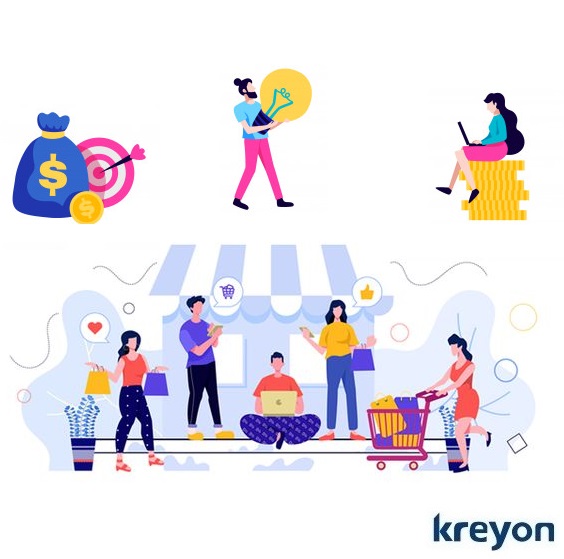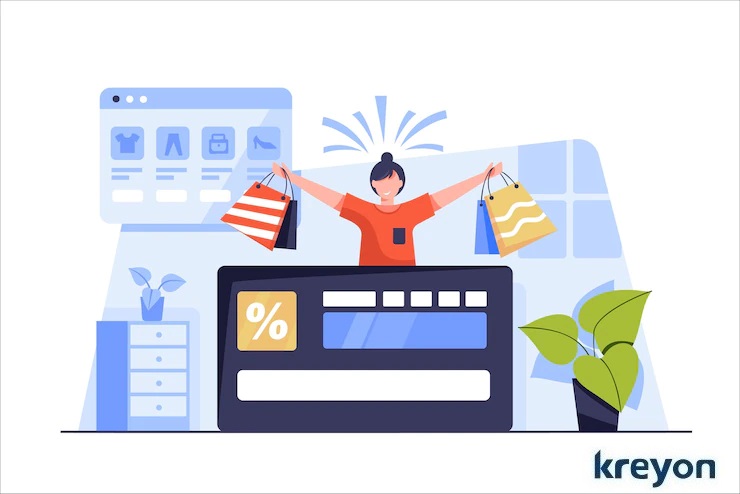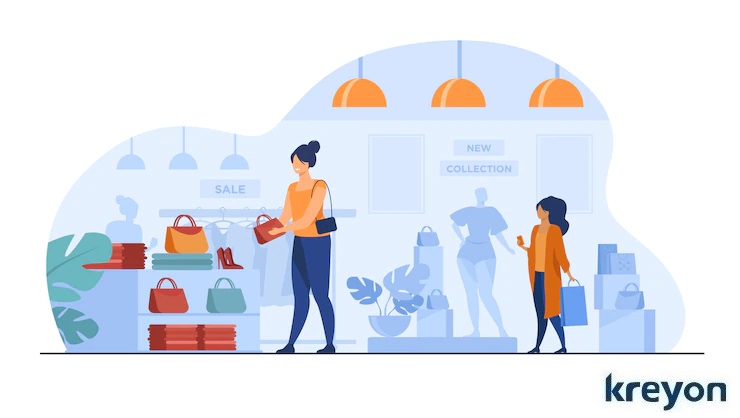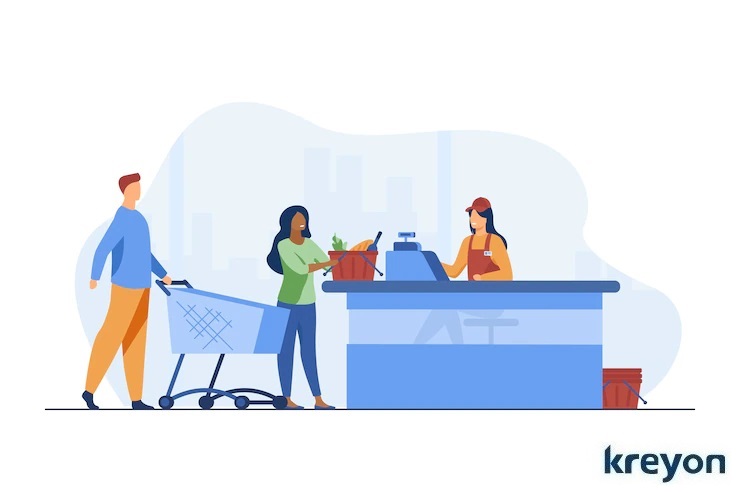How Dynamic Pricing is Key to Retail Technology Solutions

As brands continue to invest in retail technology solutions for increasing their online footprint, dynamic
pricing is a key challenge for them to improve their reach, customer experience & profitability.
The growing presence of online consumers, who order everything from grocery items, fashion accessories and daily consumables to electronic gadgets, means retailers need stronger online visibility and sales. The brick and mortar needs stronger online sales for meeting its consumer demands.
The shift to online sales for retailers has received a push since the pandemic. The customers have access to all the top ecommerce giants like Amazon, Walmart among others. So, how do brands differentiate and reach their customers more effectively. The top retail brands are now using dynamic pricing models and customer loyalty as a secret weapon for attracting better sales.
Here’s a look at how retail brands are using dynamic pricing as a strategic tool for gaining a competitive advantage and serving their customers with the lowest pricing for them.
1. Demand Driven Pricing Model
The demand driven pricing model prices items dynamically using online data. Take for e.g. a furniture store looks for similar items in the vicinity, their pricing and availability etc. before coming up with the optimum pricing. The pricing ensures that items for which there is short supply receive a premium. Other goods can be traded with more discounts.
The pricing strategy is devised as per the market model. The online stores can choose the type of pricing like demand driven, item pricing in vicinity, least price model etc. Businesses need to evaluate the cost of reaching their consumers and price the items accordingly. While discount driven model is good in the short run, it is rarely sustainable in the long scheme of things.
So, retailers must look at their best items that need to be sold online. The online store could represent profitable items or have a demand driven model, which cuts inventory costs for a business. In either case, it makes business sense for a business to have a dynamic demand driven pricing model. The pricing strategy needs to ensure that customers receive a fair deal and a win win approach is adopted for online sales.
The price scraping activity must look at alternate options available for the consumers. If there are items that can be sold to customers profitably but at the lowest available prices for them then it generates online sales and traction for an online business.
2. Consumer Experience

The consumer experience is getting richer using new technologies and innovations. The immersive and advanced technologies make online ordering smooth, seamless and transparent. The consumers can get a feel of the items they are about to purchase. If you order sneakers on Nike online store, you can play around with the shoes as if you were in the store.
The consumer experience can be enriched by merging online and physical store expectations using retail technology solutions. For e.g. brands are creating offline experiences for product visualisation in online stores and adding augmented reality based product depictions in physical stores. The merging of online and offline experiences creates a rich and pleasant brand interaction for consumers.
Customers could also choose to order items online and pick up items from the store or get them delivered to their door step. The retailers should ensure contactless checkout for the customers with an online identity verification even in physical stores. The easier and more rewarding the consumer experience, the greater the sales.
3. A/B Testing
The pricing strategy, placement of items, inventory optimisation, online sales and promotions are constantly changing. There is no fixed strategy for dealing with these variables, but a data driven approach can be very useful. For e.g. trying out different placement of items on the home page, trying various promotional options as per the location of users etc. might work well.
The online store can use variations of strategies and evaluate which works best for their business. The dynamic and data driven feedback can be incorporated on an ongoing basis. The online store can evaluate the profitability of each item in online as well as offline mode and decide on the best course of action. If there is a high cost to storing items, then those can be sold online. While, if there are items that have low profit margins, then they can be sold offline only.
The retailers can try out different options and take an approach that maximises their bottomline and helps them reach their goals. The costs of distributions can be optimised to reach a wider range of customers today. The retailers who have niche items, suppliers and robust supply chain can use ecommerce capabilities for faster expansions. They don’t need to set up physical stores at all locations, but a mixed model combining the best of online and offline worlds.
4. Geofencing with Retail Technology Solutions

The leading online stores use geofencing for pricing offers, promotional outreach and selling different product categories. With geofencing, the retailer can restrict sales of product categories in certain locations.
They can use geofencing to identify mobile users in a specific location, then target them with personal, relevant, timely push notifications when they walk or drive by the retailer. For e.g. when the GPS location of a mobile is in the vicinity of a retailer, they could receive special discounts for shopping.
The geofencing can also help retailers manage different state regulations. Say, if there is a state where taxes and high, then that the retailer can choose not to sell in that location. The geofencing can help retailers identify their top locations and customer base for high profitability. The technology can be used in identifying value based business model to increase penetration, profitability and reputation of a business. At the same time, the categories of items, locations that are not profitable may be discontinued.
5. Tracking Demand Drivers & Loyalty
The retail technology software solutions help brands understand the demand drivers, analyse market conditions and momentum. They can scrape data from the web, evalute suppliers and sellers to come up with effective forecasting models. The retail software helps companies to not only set up their product categories, pricing and inventories, but also look at the levers for improving their margins.
The profitability for every item can be evaluated with detailed reports across locations, product categories and seasons etc. The most profitable items, product categories and locations can be analysed for expansion.
The cost of item for online and offline can help retailers assess the key metrics with data. For e.g. milk and eggs could be sold profitably using online channels in certain locations, the retailer can choose to deliver only at those locations.
The customer loyalty can be tracked using an online store. The past purchases, interests, and activity can be used for personalised promotional offers. The loyalty metrics can also help companies serve their high value customers proactively.
6. Additional Services & Premium Options

The retail stores can use technology driven options for additional services too. For e.g. home delivery of items within a day could have some additional charges and available at select locations. There could be additional services based on customer loyalty scores etc. The retailers can use innovative ways to attract third party sellers on their platform too. The seller participation can be ensured with exclusive campaigns, offers and distributions for them.
The retailers can offer inventory, warehousing, selling and distribution services for selected sellers on its platform. The idea is to provide sellers a platform where they can reward the consumers with their best offers. Some products can be exclusively sold through the online stores. The differentiation, exclusivity and niche segments can help companies to stand out and establish their online stores.
Retailers can choose to build brands focused on targeted customer segments like baby care products, automobile dealers, furniture mart etc. The online store should help them standout from the other ecommerce platforms and offer value for their customers. The dynamic pricing model for premium services should ensure high value offerings for it customers. The quality of services could help brands command a premium price and increase their profitability too.
The online marketplace models are extremely competitive, price driven and demanding. However, the dynamic pricing model with exclusive offerings from retailers and value added services is enriching consumer experience. The retailers can use online stores to build their own brands instead of getting lost in the crowded marketplace and gigantic ecommerce stores.
Kreyon Systems provides turn key retail software solutions for omni channel presence. If you need any help or have queries for us, please get in touch.
